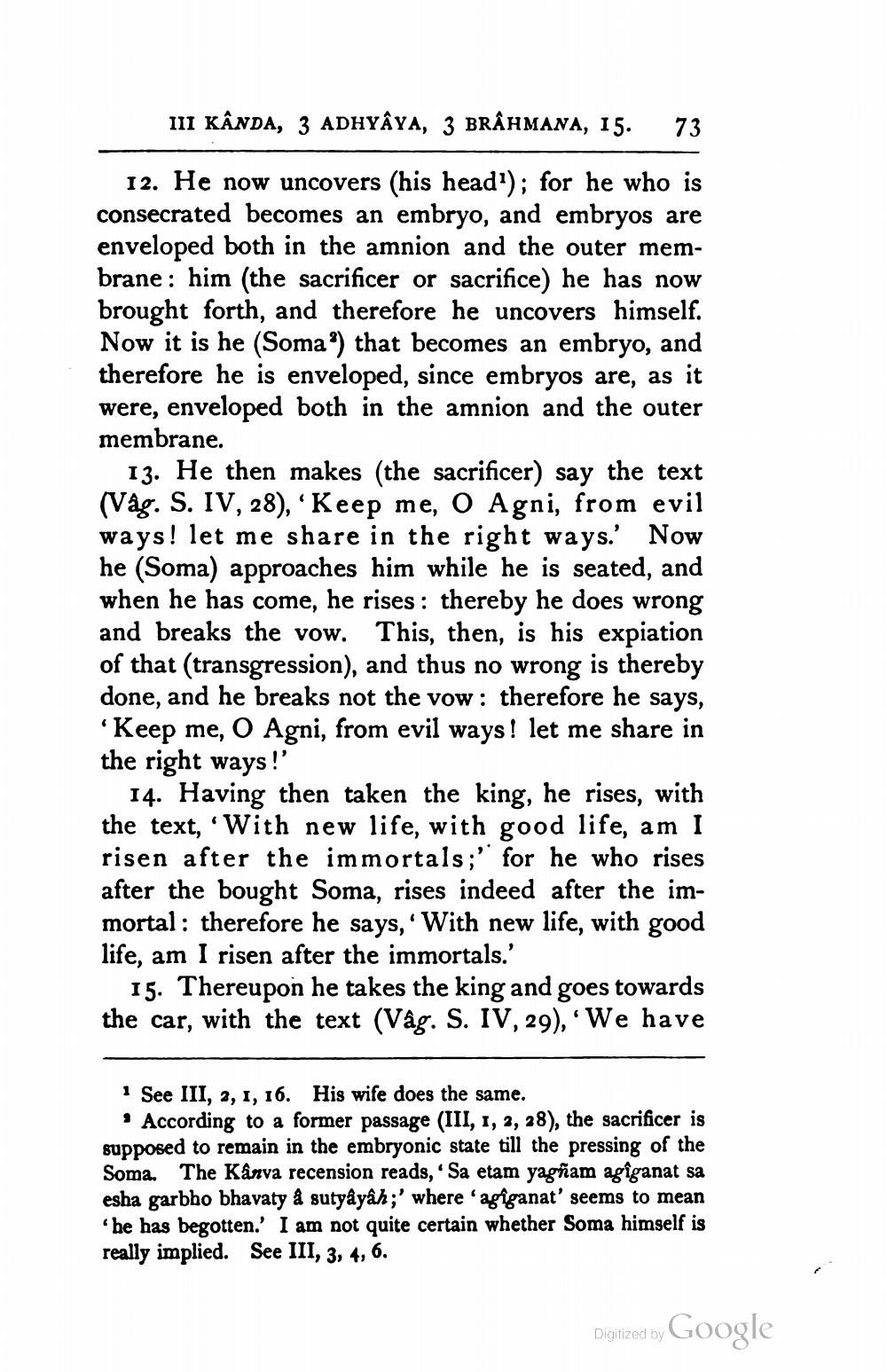________________
111 KÂNDA, 3 ADHYÂYA, 3 BRÂHmana, 15.
73
12. He now uncovers (his head'); for he who is consecrated becomes an embryo, and embryos are enveloped both in the amnion and the outer membrane: him (the sacrificer or sacrifice) he has now brought forth, and therefore he uncovers himself. Now it is he (Soma*) that becomes an embryo, and therefore he is enveloped, since embryos are, as it were, enveloped both in the amnion and the outer membrane.
13. He then makes (the sacrificer) say the text (Våg. S. IV, 28), 'Keep me, O Agni, from evil ways! let me share in the right ways. Now he (Soma) approaches him while he is seated, and when he has come, he rises: thereby he does wrong and breaks the vow. This, then, is his expiation of that (transgression), and thus no wrong is thereby done, and he breaks not the vow: therefore he says, Keep me, O Agni, from evil ways ! let me share in the right ways!'
14. Having then taken the king, he rises, with the text, With new life, with good life, am I risen after the immortals;' for he who rises after the bought Soma, rises indeed after the immortal: therefore he says, ' With new life, with good life, am I risen after the immortals.'
15. Thereupon he takes the king and goes towards the car, with the text (Vág. S. IV, 29), 'We have
· See III, 2, 1, 16. His wife does the same.
• According to a former passage (III, 1, 2, 28), the sacrificer is supposed to remain in the embryonic state till the pressing of the Soma. The Kanva recension reads, Sa etam yagñam agîganat sa esha garbho bhavaty a sutyâyâh;' where 'apiganat' seems to mean he has begotten.' I am not quite certain whether Soma himself is really implied. See III, 3, 4, 6.
Digitized by Google




